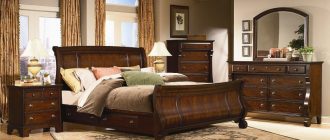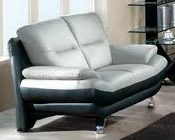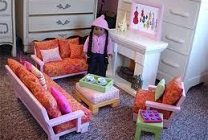Russian interest in Western culture was inaugurated with the visit of Peter the Great to Holland and England at the close of the seventeenth century. In both countries the Czar actually worked in shipyards in order to further his knowledge and interests in maritime affairs. Founding his capital at St. Petersburg in 1703, he revisited Europe in the following decade, including Germany, Holland and France in his itinerary. Impressed with the French mode of living, he adopted French fashions. Styles of dress were changed to conform to French taste and Oriental beards disappeared.
Alexandre LeBlond, a French architect, was commissioned to build the palace at Peterhof, and in 1717 left Paris for this purpose with a company of highly skilled artisans. He was joined by Nicolas Pineau, who continued LeBlond’s work following the latter’s demise only two years after his arrival in Russia. In turn, Russian youths from noble families were sent to England, Holland and Italy to study the arts and sciences of the West.
During the second half of the eighteenth century Russian furniture was produced in the French taste. Such work frequently manifests the presence of Italian and German craftsmen, by the profusion of carving expended on early Rococo designs and by a lack of fluidity in structural curves. Eleborately paneled and carved rooms followed this mode. A salon, which had been stored away since the early years of the century, when it was presented to Peter the Great by the King of Prussia, was then erected for the Empress Elizabeth Petronova. This admirably suited the prevailing Russian decor.
More accurate renditions of the French school eventually appeared, executed in mahogany, ebony, violetwood, palisander and citronnier. Inlaid decorations in parquetry, marquetry and nacre work were accompanied by gilded carvings or bronze dore mounts.
Stockholm deliveries to Russia, from 1744, are listed by Marshall Lagerquist as gueridons, French-model commodes, writing and dressing tables, and secretaries, while keyboard musical instruments and various other items were also shipped to St. Petersburg, Reval and Riga. A large quantity of mirrors which were received in St. Petersburg appeared in gilded, lacquered or polished finishes. Later, furniture was delivered by David Roentgen, while Paris examples were supplied by Jean-Henri Riesener and Georges Jacob, along with bronzes by Caffieri and Gouthiere.
Catherine the Great was so impressed on seeing a book devoted to a study of the Roman baths, published in 1772 by the Scottish architect, Charles Cameron, that he was summoned to the court and commissioned to work for the Queen. During Cameron’s activities in Russia, from 1779 to 1796, he introduced his designs in architecture and furniture in the Palace of Pavlosk, at Tsarkoe Selo, and in lesser projects for the nobility. His death in Russia is confirmed only by the sale there, in 1812, of the library of the “late Charles Cameron.”
Cameron’s architectural projects offer some parallels to the work of his countryman, Robert Adam, who is known to have designed a harpsichord for the Empress. Other compositions were apparently influenced by Sir William Chambers’ projects in the Chinese taste. Painted effects were carried out principally by Italian artists.
Decorative mediums employed by Cameron reveal a versatility of choice, including marble, alabaster, porphyry, agate, malachite, lapis lazuli and other semi-precious stones. He also favored tinted glass, mirror panels, mural paintings, stucco ornament, porcelain and faience. Jasper wares were supplied to Catherine the Great by Josiah Wedgwood, as one of his most regular and important customers.
Seat furniture and side tables designed by Cameron, and executed in Russian shops, often achieved the same results that are seen elsewhere in the assimilation of both French and English designs of the later style periods, thus paralleling some German and Swedish examples developed under these two influences, and amply illustrating this phase of interrelation.
An interesting development occurred at the close of the eighteenth century. The popularity of designs which had been seen in chairs received from the Jacob atelier was responsible for the accurate copying of these models in St. Petersburg. Representing the period in which Jacob was subject to French influence, these designs were therefore transposed from London to Paris, and thence to St. Petersburg.
At least one British furniture shop must have been operating in Russia when Sheraton’s Drawing Book was published, as “Dillon, Cabinetmaker, Russia,” is listed therein as a subscriber.





